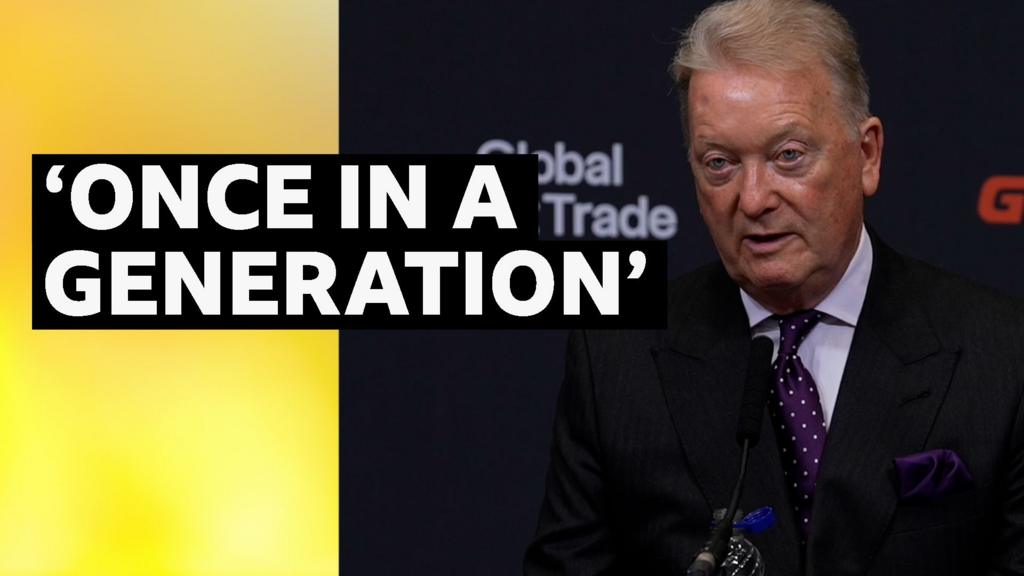10 Powerful Sales Techniques for Successful Selling

In the realm of successful selling, mastering effective techniques is vital. Start by comprehending your buyer’s situation, rather than their personality. Focus on their specific challenges and introduce unconsidered needs that may disrupt their current solutions. Building trust is fundamental, so engage in consultative selling and utilize technology for insights. These strategies can improve your sales effectiveness. Yet, there are more techniques that can further raise your approach and results.
Key Takeaways

- Understand your buyers’ unique situations and challenges to tailor your sales approach effectively.
- Highlight unconsidered needs to create urgency and position yourself as a trusted advisor.
- Leverage technology and data analytics to refine sales messaging and enhance engagement.
- Utilize customer stories and testimonials to build credibility and alleviate buyer concerns.
- Focus on long-term relationships through active listening and collaboration to foster trust.
Sell to Your Buyer’s Situation (Not Their Disposition)
When you approach a potential buyer, it’s crucial to focus on their current business situation rather than their personal traits or preferences.
In B2B sales, comprehension of their business goals and challenges drives purchasing decisions more effectively than demographics or job titles. Since the average buying process involves 6 to 10 decision-makers, you’ll need to tailor your sales styles to address the collective situation.
Recognizing the Fundamental Attribution Error helps you realize that buyers often react to situational pressures instead of inherent characteristics.
Disrupt Your Prospect’s Status Quo
To effectively disrupt your prospect’s status quo, you need to address their resistance to change.
Highlighting the consequences of inaction can create urgency and motivate them to reconsider their current situation.
Overcome Resistance to Change
How can you effectively disrupt your prospect’s status quo? Start by highlighting the limitations of their current solutions. Show them how sticking to the status quo might be hindering their business goals. Introducing Unconsidered Needs can reveal unmet problems, prompting them to rethink their choices. Create urgency in your conversation, focusing on immediate business needs—this can disrupt their inertia. Use a clear comparison to illustrate the gap between their current situation and potential advancements:
| Current Situation | Improved Approach |
|---|---|
| Inefficient processes | Streamlined solutions |
| Missed opportunities | New growth avenues |
| Employee frustration | Increased satisfaction |
| Stagnant revenue | Improved profitability |
Highlight Consequences of Inaction
Comprehending the consequences of inaction can be a potent motivator for your prospects. Many prospects hold onto the status quo owing to a natural bias against change, which can hinder their business goals.
By emphasizing the negative outcomes of remaining stagnant, you can create a compelling reason for them to act. Highlight how their current situation might lead to missed opportunities or exacerbate existing problems.
Use data and real-world examples to illustrate these risks, making the urgency for change clearer. When prospects perceive immediate threats to their objectives, they’re more likely to respond.
In the end, by disrupting their complacency and presenting the costs of inaction, you can drive them toward making a decision that aligns with their goals.
Introduce Unconsidered Needs

Have you ever considered what problems your customers mightn’t even realize they have?
Introducing Unconsidered Needs is an impactful strategy that sets you apart from competitors. By highlighting unmet problems or missed opportunities, you can improve your persuasive impact by up to 10%.
Effective salespeople help prospects recognize what’s holding them back from their goals, creating a sense of urgency for change. This approach not only avoids commodity messaging but likewise makes your offerings more compelling, reducing the focus on price.
When you address these Unconsidered Needs, you position yourself as a trusted advisor, establishing a deeper connection with your prospects. This nurtures long-term relationships, ultimately leading to greater sales success.
Tell Customer Stories With Contrast

Customer stories with contrast serve as impactful tools in the sales process. By illustrating the stark differences between a customer’s “before” state and the “after” state, you create a compelling narrative. This technique emphasizes the urgency for change, motivating prospects to act. Financial proof within these stories bolsters credibility, linking outcomes to strategic goals.
| Before State | After State |
|---|---|
| Struggling with low sales | Sales increased by 30% |
| High operational costs | Reduced costs by 20% |
| Poor customer satisfaction | 95% customer satisfaction |
| Missed market opportunities | Captured new market segments |
Avoid the Parity Trap in Sales Conversations

How can you stand out in a crowded market where many competitors offer similar products? To avoid the Parity Trap, guarantee your sales messaging is distinct and engaging.
Start by clearly articulating your unique value propositions, which highlight what sets your offerings apart. Instead of listing generic features, focus on the specific benefits and outcomes your solution provides.
Engaging storytelling can help illustrate these unique aspects, creating a narrative that resonates with potential buyers. Furthermore, avoid overwhelming prospects with excessive information; tailor your messaging to emphasize buyer-focused value.
This approach not just maintains interest but also encourages deeper engagement, helping you steer clear of price-based decision-making among buyers and finally leading to more successful sales conversations.
Create a Sense of Urgency

Creating a sense of urgency is essential when you want prospects to act swiftly, as it emphasizes the risks associated with delaying decisions.
You can achieve this by introducing time-sensitive offers, like limited-time discounts or exclusive deals, which can motivate buyers to make quicker decisions.
Frame your conversation around immediate business needs and highlight potential losses from maintaining the status quo. This approach increases the urgency for change.
Research shows that prospects respond better to pitches that emphasize scarcity or deadlines, leading to higher conversion rates.
By leveraging urgency in your communication, you distinguish your offerings from competitors, encouraging prospects to prioritize your solutions over others.
Act now, and watch your sales improve considerably.
Utilize Social Proof

When selling, showcasing social proof can greatly strengthen your pitch and build trust with prospects. Leveraging testimonials and case studies greatly improves your credibility.
Remember, 79% of consumers trust online reviews as much as personal recommendations, so including positive feedback from existing customers can alleviate buyer concerns. Highlighting successful outcomes builds confidence in your product or service.
Moreover, industry recognition or awards can improve your reputation, as 92% of consumers trust recommendations from others over branded content. Incorporating social proof into your marketing materials can boost conversions, with 70% of consumers more likely to convert after reading positive reviews.
Utilizing peer influence in your sales conversations can further encourage decision-making, as 74% of consumers view word-of-mouth as a key purchasing influencer.
Focus on Value Creation

Focusing on value creation is essential for effective selling, as it shifts your conversations from mere product features to the specific outcomes that truly matter to your buyers.
By tailoring your solutions to align with their strategic objectives, you can increase the likelihood of purchase. Buyers are more inclined to invest when they see how your offering addresses their unique challenges.
Emphasizing long-term benefits rather than just short-term gains helps prospects visualize the overall value of their investment. Build a compelling business case that highlights how your solution solves specific problems, showcasing the return on investment.
Research shows that buyers respond better to approaches that illustrate clear value and benefits, leading to higher sales effectiveness and stronger connections.
Engage in Consultative Selling

Engaging in consultative selling transforms the traditional sales approach by positioning you as a trusted advisor rather than just a salesperson. This method focuses on comprehending your customer’s unique needs and challenges, allowing you to co-create customized solutions.
To succeed, you should practice active listening and ask probing questions that reveal deeper buyer needs, improving your sales conversations. Research shows that this approach nurtures long-term relationships, prioritizing collaboration over mere transactions.
Leverage Technology and Data

Leveraging technology and data improves your sales strategy by providing valuable insights into buyer behavior and market trends. By utilizing data analytics, you can identify trends that help tailor your approach. CRM tools enable you to track customer interactions, manage relationships, and streamline communication. Automating repetitive tasks, like follow-up emails, lets you focus on high-value activities that close deals. Analyzing buyer behavior refines your messaging, ensuring it resonates with your target audience. Additionally, leveraging digital channels expands your reach, improving engagement rates.
| Technique | Benefit | Example |
|---|---|---|
| Data Analytics | Identifies trends | Analyzing purchase patterns |
| CRM Tools | Streamlines communication | Tracking customer history |
| Automation | Frees up time for sales activities | Automating follow-ups |
| Buyer Behavior | Refines sales messaging | Tailoring offers |
| Digital Outreach | Expands market reach | Using social media ads |
Frequently Asked Questions

What Is the 10-3-1 Rule in Sales?
The 10-3-1 Rule in sales helps you understand your outreach effectiveness. For every 10 prospects you contact, expect to have 3 meaningful conversations, which may lead to 1 closed sale.
This rule emphasizes consistency in your outreach strategy. By tracking these interactions, you can refine your approach and improve your conversion rates.
What Is the Most Effective Sales Technique?
The most effective sales technique often depends on your audience and product. Nonetheless, consultative selling stands out since it positions you as a trusted advisor. By actively listening and addressing customers’ specific needs, you build stronger relationships.
Furthermore, incorporating storytelling can improve your presentations, making your key messages memorable. Creating urgency through limited-time offers can likewise prompt quicker decisions, further boosting your sales effectiveness.
Adapt these strategies to fit your unique situation for ideal results.
What Are the 5 W’s in Sales?
The 5 W’s in sales are crucial for comprehending your approach.
“Who” identifies the decision-makers you need to engage.
“What” specifies the product or service you’re offering, highlighting its value.
“Where” considers the setting of your sales conversation, which can influence your communication style.
“When” focuses on the timing of your outreach, as connecting at the right moment can improve your chances of success.
Finally, “Why” clarifies the purpose behind your sales efforts.
What Is the Golden Rule in Sales?
The Golden Rule in sales is simple: treat your customers the way you’d like to be treated. This principle nurtures trust and respect in your relationships.
By prioritizing empathy and truly comprehending your customers’ needs, you can considerably boost your sales performance. Active listening helps you identify unconsidered needs, allowing you to tailor your solutions effectively.
In the end, following this rule can lead to increased customer loyalty and satisfaction, benefiting your long-term success.
Conclusion

Incorporating these ten influential sales techniques can greatly improve your selling success. By focusing on your buyer’s unique situation and needs, you can create meaningful connections. Disrupting the status quo and telling compelling customer stories will differentiate you from competitors. Engaging in consultative selling, leveraging technology, and emphasizing value creation will build trust and credibility. Implementing these strategies will not just enhance your sales approach, but will also nurture long-term relationships with your clients.
Image Via Envato
This article, "10 Powerful Sales Techniques for Successful Selling" was first published on Small Business Trends
What's Your Reaction?
 Like
0
Like
0
 Dislike
0
Dislike
0
 Love
0
Love
0
 Funny
0
Funny
0
 Angry
0
Angry
0
 Sad
0
Sad
0
 Wow
0
Wow
0






























































































